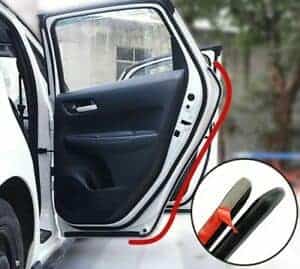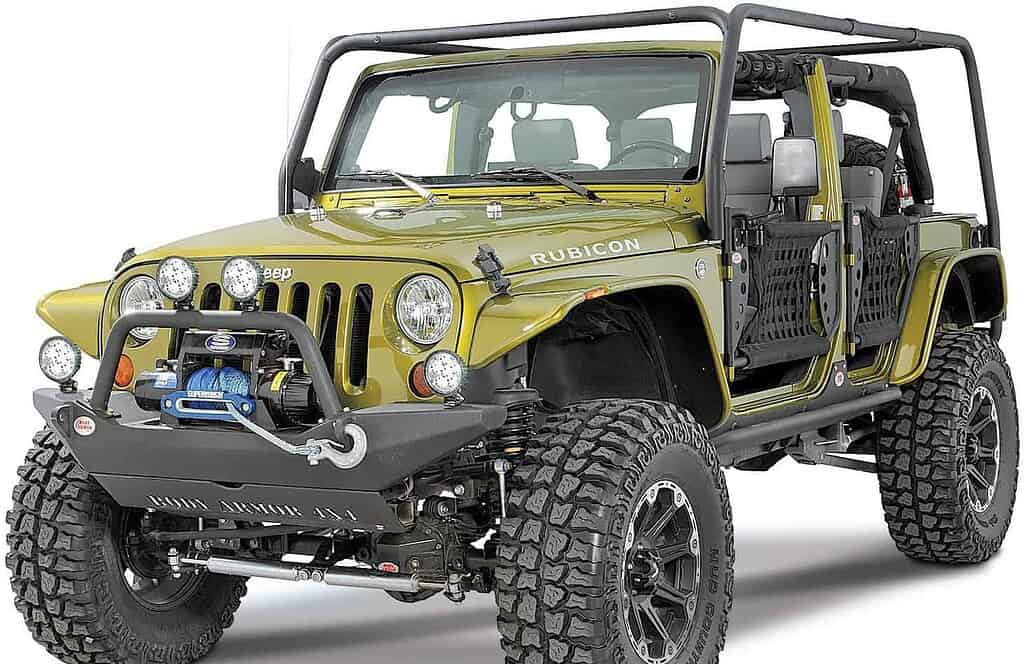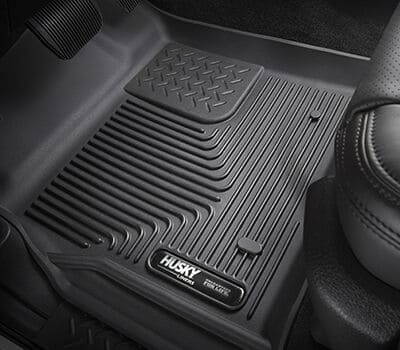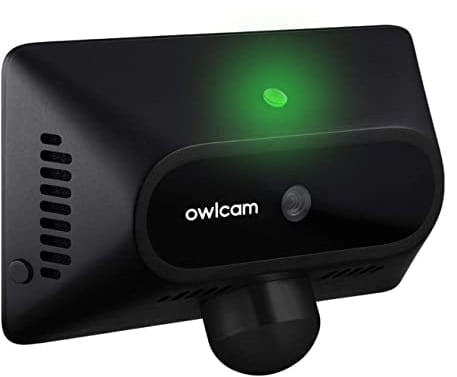10 Affordable Ways to Protect Your Car From Just About Everything
When most people spend a thousand bucks or more on a new phone, the first thing they do is go and spend about $10 or less on some sort of case to protect it. But when we go and spend tens of thousands of dollars on a car, SUV, truck, or van, we rarely spend any money at all on vehicle protection for preserving this much more valuable asset with things as simple as a car door protector.
One of the more common protection products people do get talked into buying for their new cars from dealerships is dealer-applied paint protection, and that’s a subject I’ve already covered in great detail in this article if you want to learn more. I also recently wrote about car seat covers and you can read all about them in this post.
However, there are lots of other ways and other products to protect your car that could easily end up saving you money in the long term, so let’s take a look at ten affordable ways to protect a vehicle from just about anything.
Car door protectors

Your car doors are vulnerable to damage because they will often be opened when obstacles are around, such as bollards, fences, walls, and other vehicles parked next to you. It’s the easiest thing in the world to have your mind on something else when you’re in a parking lot and getting out of your car.
Even if you think you are being careful, squeezing yourself out of your car when you’ve had to park closer than you’d like to another vehicle can easily lead to it touching the other car. Still, you could also be scratching the edge of the door with the buttons, zippers, or buckles on your clothes.
A car door protector or car door guard prevents dings and scratches in case of collision or contact from a car or other hard surfaces next to where you are parked. They provide a physical barrier between the surface of the door and any obstacle they might otherwise make contact with.
Car door protectors are not without their issues if you don’t fit the right type, though, so they’re a subject you need to know more about before you go buying and fitting some.
If you’d like to know more about different types of car door protectors and how much protection they really do or don’t offer, then check out my article on the subject here that also tells you what I really think of them.
Sill protectors

It’s probably not until you take a close look at your vehicle with a view to selling it that you realize how much unsightly damage has been done to the sills in your car. This is a particular problem with trucks and SUVs as they often spend more time than the average car having objects and equipment loaded and unloaded that can easily scrape sill or be dropped on them.
Even people getting in and out can cause scrapes, scuffs, and scratches to door and trunk sills, so fitting some sort of aftermarket protection is a more affordable solution than getting them refurbished by a body shop or mobile repairer if you haven’t bothered to protect them.
To learn more about the various types of car door sill protectors and to find out what I do and don’t recommend, check out my article here.
Hood covers

Until I first set foot in Florida about 20 years ago, I’d never heard of a hood protector, never mind actually seen one on a car. Once I noticed one, I saw they were everywhere, but I have to admit I wasn’t sure what their point was right away.
Hood covers go by several other names such as front-end bra car bra, bonnet bra, front-end cover, hood bra, auto bra, hood mask, car mask, and more. They are basically a vinyl cover that’s usually black and fixed to the front of a car or other vehicle to protect the bumper, hood, and sides of the fender from scratches, dings, and dents from stone chips and other hazards to the bodywork.
They’re not the most attractive addition to your vehicle’s aesthetic, but they certainly do offer effective protection if you’re regularly driving on loose surfaces or roads that have a lot of debris on them.
If you have a black vehicle, they’re not too noticeable, and they’re particularly effective for square-fronted cars such as pickup trucks and some SUVs. If you’re not bothered about the way they look, you’ll definitely be glad of the protection they deliver when you come to sell your vehicle, and the buyer can’t try and knock your asking price down for stone-chip damage to the hood and fenders.
Of course, these too can have their downsides, so check out my page about them here for more details and some recommendations.
Car covers
Although not designed to protect your car when you’re in it and driving, car covers are an excellent way to save a vehicle from all sorts of damage if you don’t have access to a garage or some other type of sheltered parking.
It wasn’t until I started researching the subject that I realized just how many different types of car covers you can get these days. However, they can be a hassle to fit and repeatedly remove if you’re in and out of your car frequently, but they do offer excellent protection from all sorts of problems.
And as well as offering protection for your vehicle’s paint, bodywork, wheels, and glass, a good car cover can also ask as a deterrent to potential thieves.
Car cover range in price from about $25 for a cheap, basic universal-fit cover to a couple of hundred dollars or more for higher quality, better fitting covers that offer greater protection, and you can even pay up to $1,000 or more for freestanding versions that are something akin to a portable garage.
Check the different types here and what I think are the best ones in each category.
Door seals

Your vehicle obviously comes from the factory with (hopefully) perfectly fitting rubber seals for the doors, trunk, hood, liftgate, and sunroof. However, time, weather, and constant use can loosen, rip, crack, or split the rubber, which can mean trouble.
If you are starting to find your vehicle windows are covered in condensation when you go to it on or morning, or if you’re beginning to detect a damp aroma whenever you’re inside your vehicle, it could be that water is getting in from outside.
The most common way for water to get inside a car is through damaged door seals, so replacing them is vital for protecting your car’s interior and eventual resale value.
Replacement seals can be inexpensive and easy to fit, but they can also be alarmingly expensive and challenging to fit. How it works out for you will probably depend on your vehicle and where you have to source new seals from.
The obvious place to source new seals is from the parts department of a dealership that sells your brand of vehicle, but sometimes you can get non-brand seals that will fit even the most expensive cars if you are the person fitting them knows what they are doing.
Fender covers
I was looking around for the correct term for these, but I couldn’t come up with anything genuinely definitive. What I’m talking about here are covers that mechanics in a workshop will use to protect the fenders or the front of a car while they’re leaning on them to access the engine bay.
You don’t have to be an experienced and qualified vehicle technician to find yourself requiring access to parts of your car’s engine, and that will often mean leaning on parts of the bodywork while you do it. You could be changing a fuse or sparkplug, or you could even just be checking your oil or windshield washer fluid.
There are plenty of pieces of routine maintenance you should be doing on your vehicle that could lead to you scratching or denting a fender or front panel with a zipper, button, or buckle on your clothing. The way to prevent this from happening is by placing a cover over the area of the vehicle bodywork that your body will be resting on while you access the engine bay.
You could, of course, use an old towel or piece of clothing if you want, but if you have a proper fender cover, you can rest assured that no accidental damage will be done to your precious paintwork.
The good news is that good-quality fender covers are relatively inexpensive, and they don’t have to be a precise fit. You can find some decent ones that don’t cost a great deal right here.
Vehicle security
When you type something like “vehicle protection” in Google, you’ll probably be bombarded with items designed to keep your vehicle safe from theft. This could be anything from a physical steering lock or wheel clamp to an advanced electronic monitoring system with cameras and sensors that can sound an alarm or notify you or a monitoring company if something suspicious is detected.
All these different vehicle security solutions have their pros and cons, and I cover many of the main ones in this article here. I’ll also give you my honest opinion and the benefit of my years of experience. Trust me; there are ways thieves can profit from your vehicle without having to steal the car itself that you might want to protect yourself against.
Body armor

Please don’t laugh; I’m not kidding here. I’m not advocating what I will discuss next for your 2002 Buick Regal or 2017 Ford Fusion; this is all about protecting your SUV or truck when you leave the pavement for more challenging surfaces.
Now, although I know this article is about affordable ways to protect your car, some body armor can get outrageously expensive at times. However, the expensive stuff is either seriously hardcore accessorizing for the most demanding off-roading challenges or items that will do the job but are as much about aesthetics as about actual protection.
Body armor can be as cheap and straightforward as something to protect your sump, but it can also be a replacement bumper that looks like something robbed from an Abrams tank costing silly money.
I’m not going to direct you to an article I’ve written because, despite ten years of selling Land Rovers, I’m not an expert in this field at all. But I will point you towards a couple of outstanding suppliers of all things off-road who I’m familiar with, which are 4Wheel Drive Hardware and 4 Wheel Parts.
Car mats

Something I’ve never understood about car buyers, even though I’ve been in the industry for so long, is their approach to car mats. Even before I started in the industry, I always thought that the obvious way to protect the carpet in the front and rear of a vehicle was with rubber mats. However, the majority preference for car mats appears to be carpet.
I don’t understand this, and I never will, I suppose. Why would you try to protect something that will get dirty and wet from your feet by covering it with a mat made of the same sort of material that will also get dirty and wet from your feet and will also be difficult to clean?
For some reason unknown to me, my point of view is a minority view. I actually had difficulty getting rubber mats for my current SUV because the parts department at the dealership didn’t even keep rubber mats in stock for their best-selling model anymore.
The parts guy told me he couldn’t even remember the last time he was asked for a set of rubber mats for that or any of the vehicles they supply. And it was the same story when I got to the next protective item on my list; trunk protectors.
Trunk protectors

This is a protection product that I always buy for every vehicle, but it might not be high on everyone’s list of priorities. All sorts of items end up in the trunk of my car from time to time, and it makes sense to protect the trunk floor, sides, and the backs of the rear seats from damage, dirt, and spills, especially with SUVs.
In the past, I’ve had tins of paint, bags of plaster, boxes of tiles, building debris, scuba tanks, boat anchors, ropes bags of household garbage in there. And even when none of that is being transported in the back of my SUV, my dog is in there. I don’t have him in a crate, but if you have your dog in a crate, you will definitely want to protect the sides of the trunk and backs of the rear seats if the crate isn’t securely fastened down not touching them.
Once again, I favor rubber trunk protectors over carpet ones, but I had to go with carpet for my current vehicle because the rubber one I wanted wasn’t available, and I would have had to wait at least six weeks to get one. The dealership said they couldn’t remember the last time anyone even asked about one, like the rubber mats. What on Earth is wrong with people????
I also want to make a case for appropriately tailored mats and trunk protectors. Now I know that any mat will potentially do the job of offering the protection you need, but don’t you think that “one size fits all” mats look cheap, nasty, and low-rent? Why would you buy or lease a vehicle costing tens of thousands of dollars and then refuse to spend an extra few bucks to get a set of mats that actually fit and look the part?
BONUS PROTECTION ITEM!!!!

I know I was only supposed to be giving you ten protection items for your car, but while researching this article, I came across something I simply have to tell you about. I’m not sure how much anyone actually needs one of these or how often the events will occur to justify owning one. But who wouldn’t be impressed to learn that your car, truck, or SUV was now fitted with an EMP Shield?
EMP Shield is designed to protect anything from a vehicle to an entire home from lightning, solar flares (coronal mass ejection), power surges, and any electromagnetic pulse that might pose a threat. I’m sure any preppers out there will be all over this. Still, as our vehicles are becoming increasingly reliant on electronics for every element of their operation, maybe this isn’t such an extravagance after all.
If you’re intrigued by the idea of an EMP Shield because I know I was, you can check them out right here.



